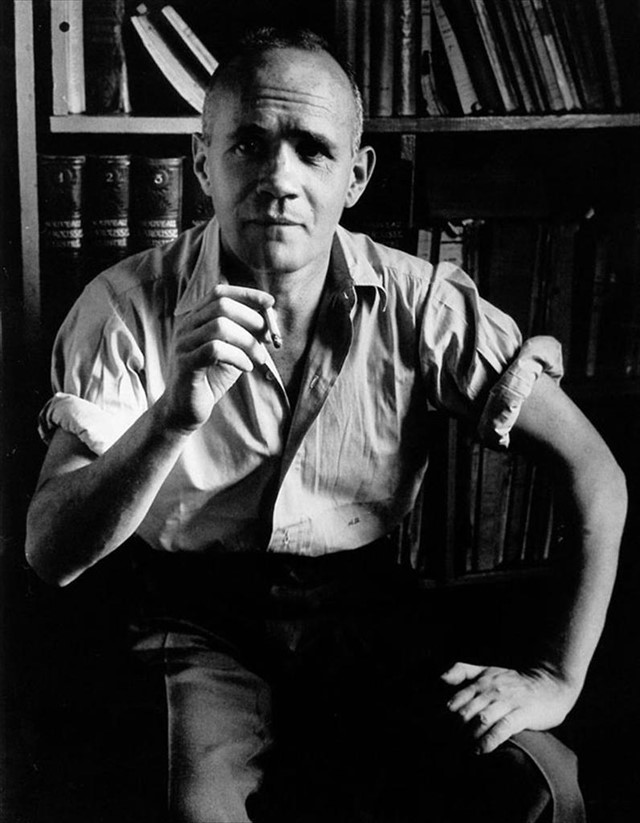Celebrating the life and style of French avant-garde writer Jean Genet
Sometimes, the fashion legacy of a famous figure owes itself not to the way they dressed but the sartorial influence of their life’s work. French avant-garde writer Jean Genet's inversion of the moral and literary zeitgeist gave way to an enduring romanticism with French vagrancy and a tawdry underworld that continues to inspire artists, musicians and fashion designers to this day. Emblematic of Genet’s erotically-charged vision is the Breton-striped sailor from his novel Querelle de Brest.
Born in 1910 to a prostitute, adopted by a carpenter, raised in the provinces, then leaving to drift around Europe working as a beggar and prostitute, Genet created work – novels, plays and artist essays – that explored themes of homosexuality and criminality, fuelling fascination about his own unconventional backstory.
His writing earned him an impressive league of fans; Pablo Picasso, Jean-Paul Sartre and Jean Cocteau were enthusiasts. Picasso lauded Genet's art writing, calling his essay on Giacometti the greatest essay on an artist; Cocteau visualised Querelle and immortalised it in film; and all three men, among others, signed a petition to successfully prompt a presidential pardon for an imprisoned Genet in 1948.
Jean Cocteau’s venereal illustrations for Querelle de Brest were published in 1947. This in turn set the tone for the aesthetic of Rainer Werner Fassbinder’s final film – an adaptation of Querelle, which was released posthumously after Fassbinder’s death from a drug overdose in 1982. Andy Warhol’s poster tribute to the film depicts the central character Querelle in a sensual embrace. This coincided with an exploration into homoeroticism in Warhol’s work, which spurned the infamously lascivious Sex Parts series.
“If Genet’s friend and supporter Jean Cocteau and his milieu were originally responsible for the introduction of “sailor style” – the striped Breton T-shirt and red pompom hat – it is Genet and his character Querelle of Best, played by Brad Davis in Fassbinder’s 1982 film, with a poster designed by Warhol, who made it iconic.” – AnOther Magazine, issue 19.
Genet’s contemporary Pablo Picasso was also known for his louche Breton-striped style. Later, the young illustrator Andrew Warhola Jr. would reinvent himself as a pop-art personality; Andy Warhol’s defining look would include an identical blue and white-striped T-shirt. David Bowie, who would sometimes appear on stage in a white suit topped with the red-pompom hat of traditional French naval uniform, was allegedly inspired by Genet to write his classic Jean Jeanie.
In the fashion sphere, while the Breton stripe is a motif that is repeated season after season, it holds the most significance for Jean Paul Gaultier. His personal style is mirrored on the bottle of his widely popular men’s fragrance Le Male – the homoerotic perfect male torso laying a new claim of ownership over the aesthetic.
“My Grandmother used to dress me in Breton tops, so when I think of navy stripes I feel a nostalgia for that era when I was growing up. And then of course, there is Jean Genet and Querelle de Brest and Rainer Werner Fassbinder’s film of that novel. At the beginning of the 1980s, I started wearing the Breton stripe top again. I wore them everywhere, even with a tuxedo for gala evenings. I paired them with everything – jeans, even a kilt” – Jean Paul Gaultier told The Financial Times in January.
Suggested Reading: Read more about Picasso and his influence on women's fashion for the spring/summer 2012 season here.
